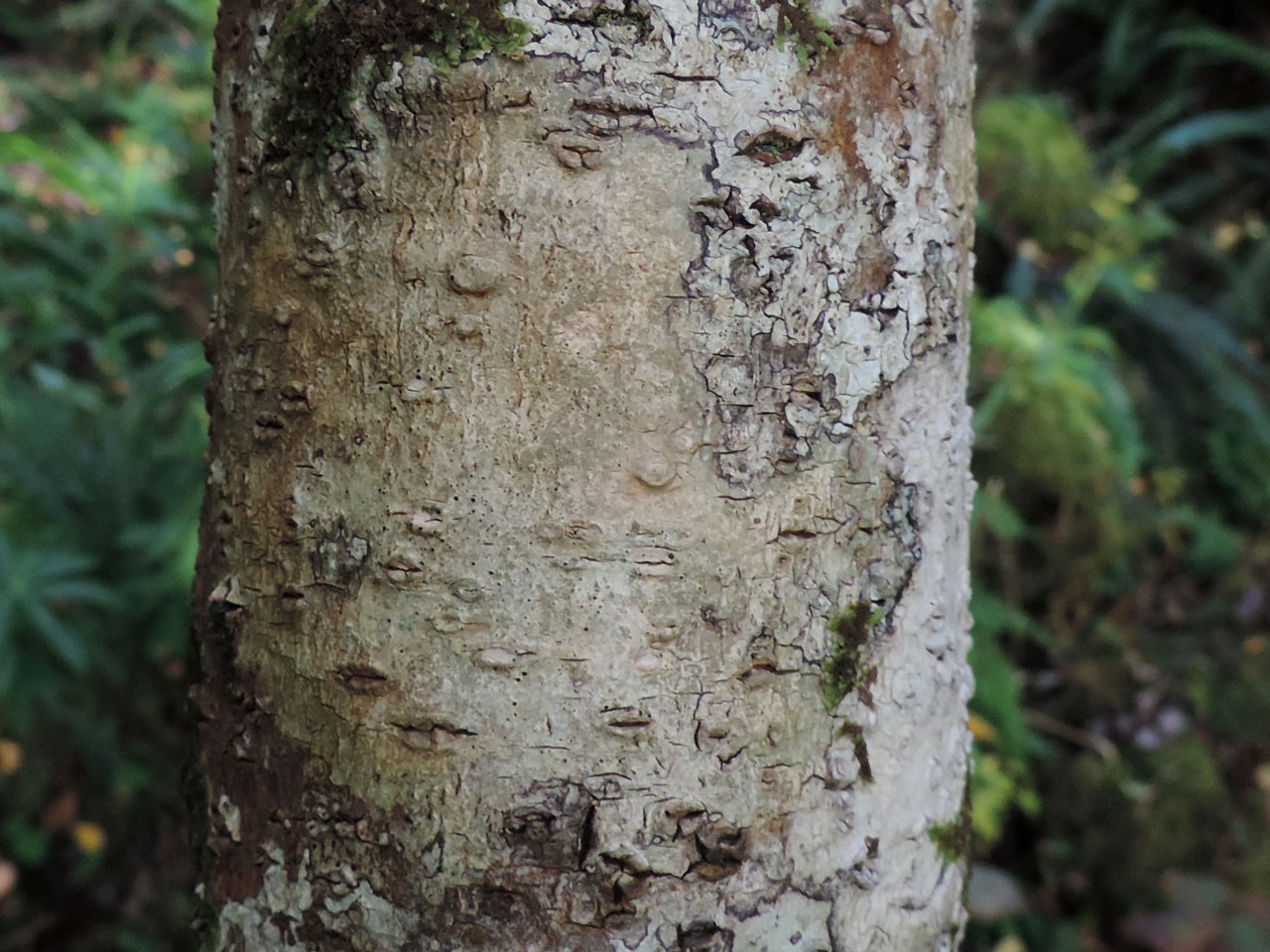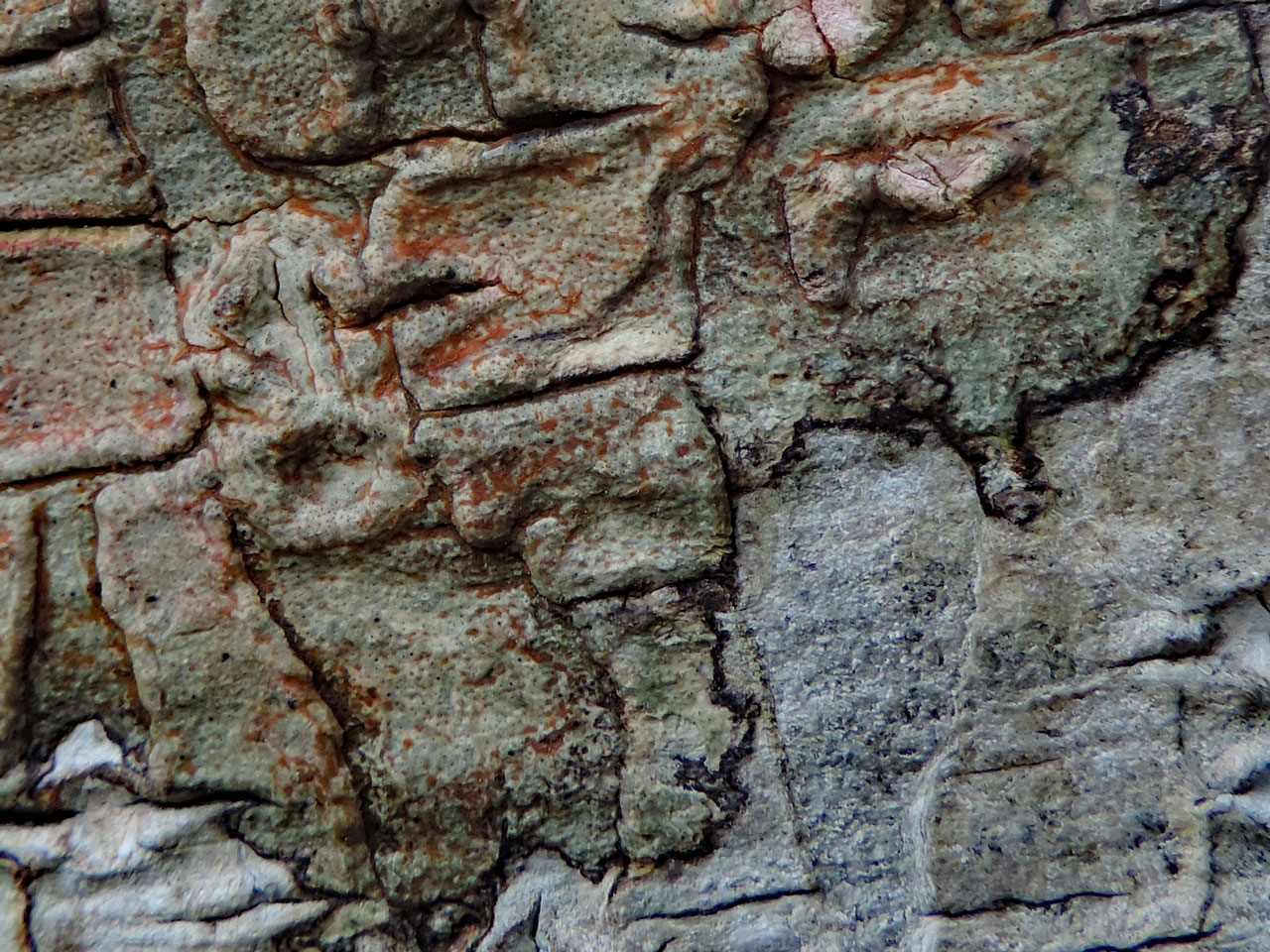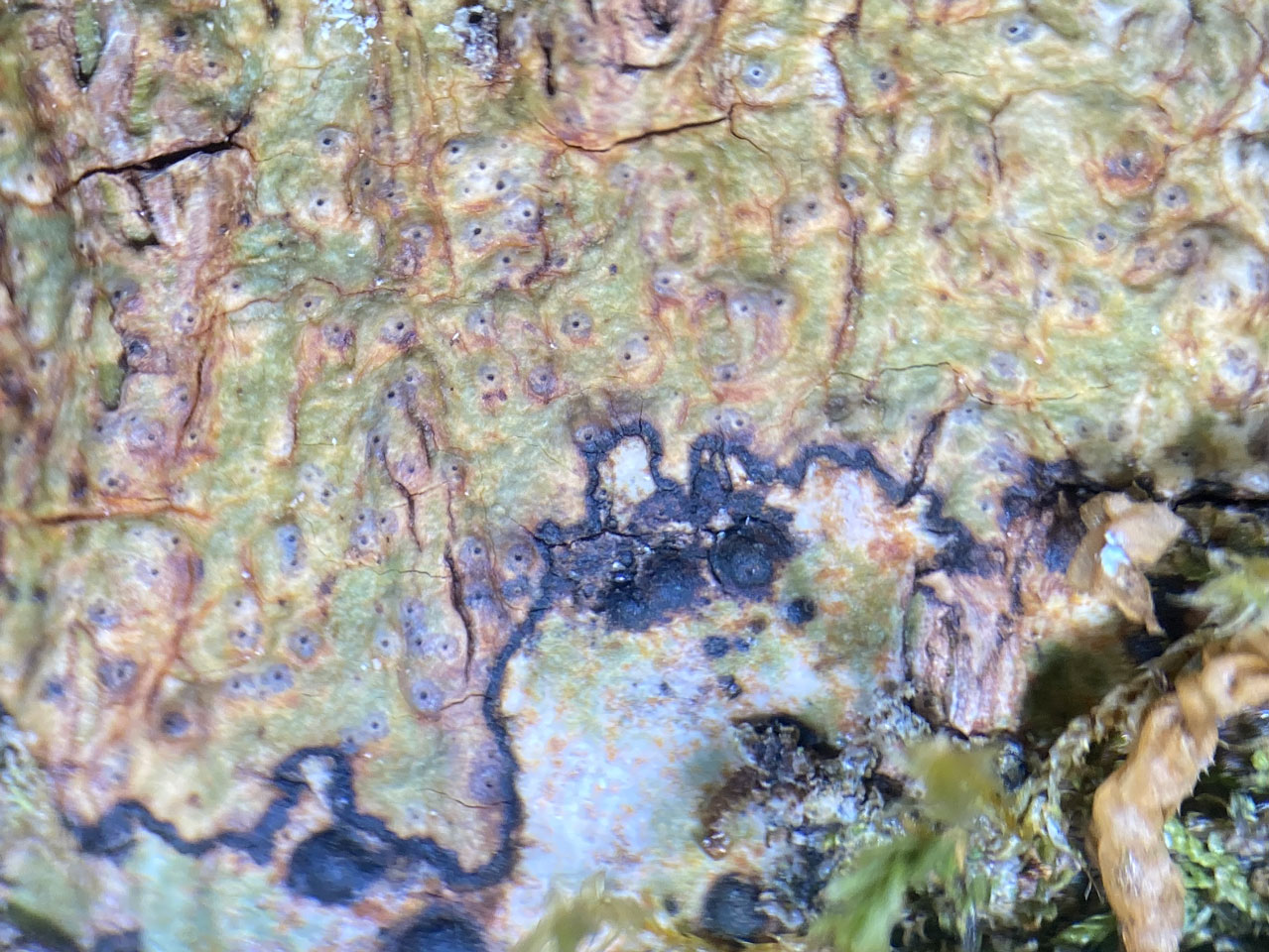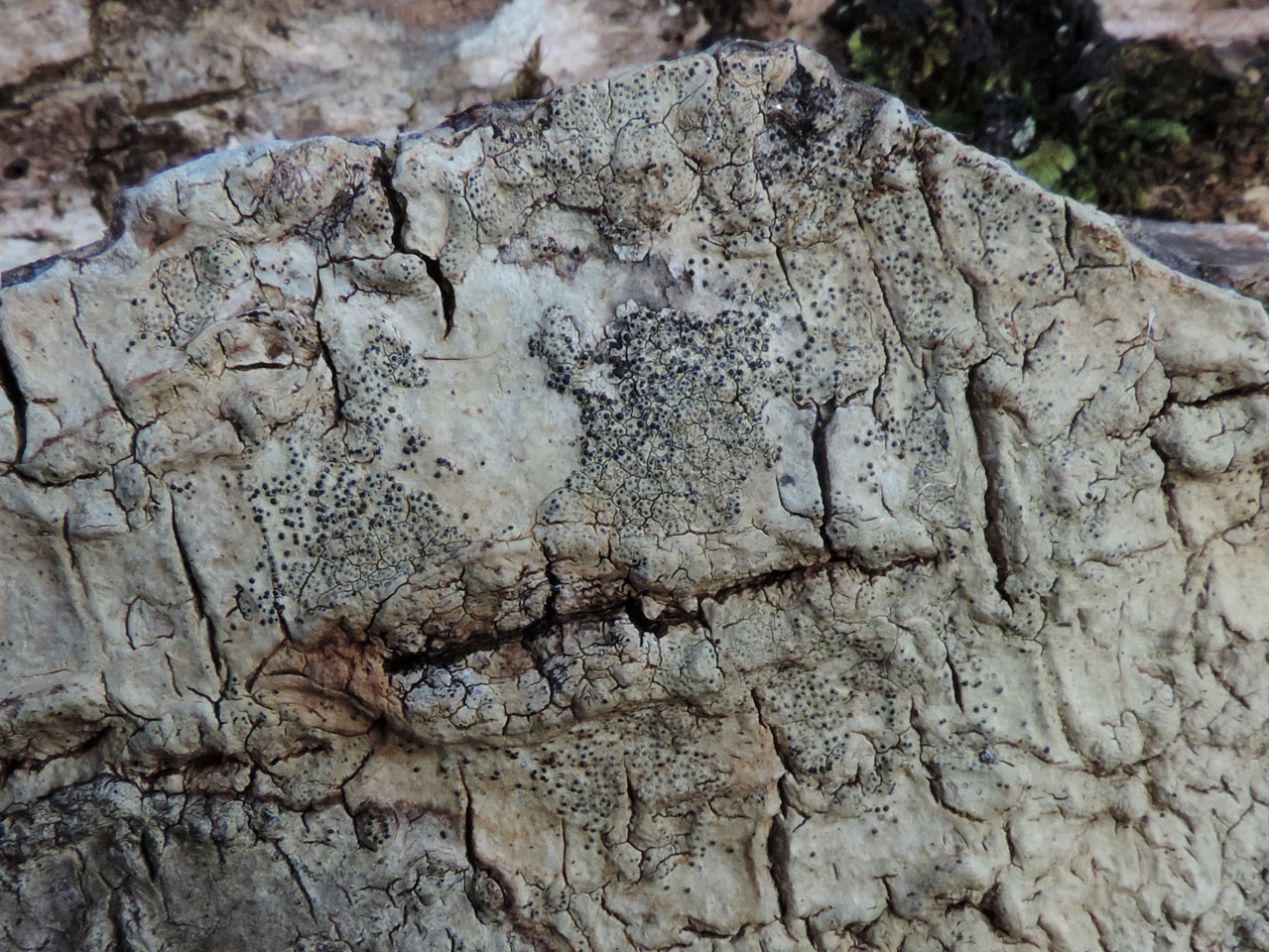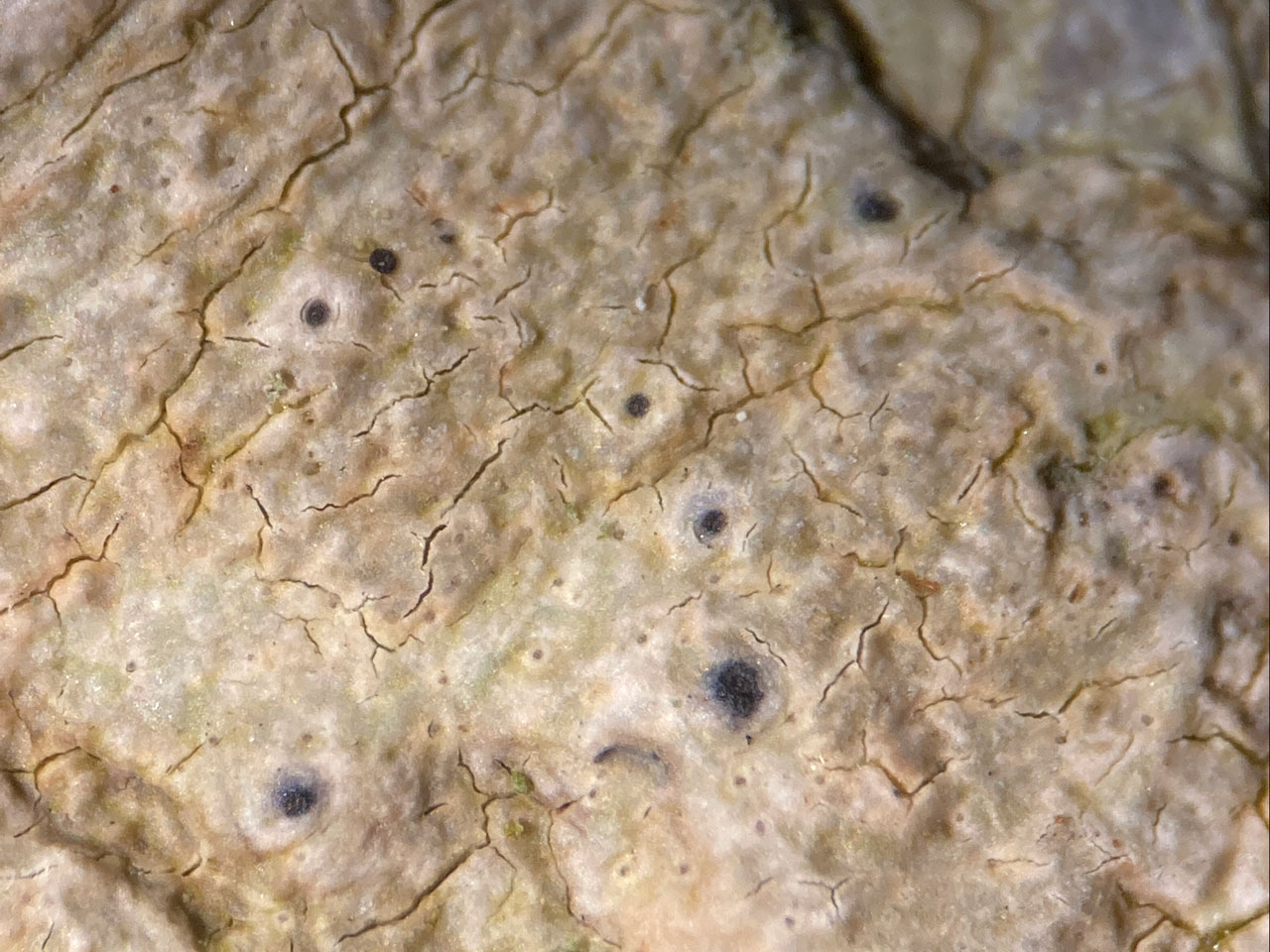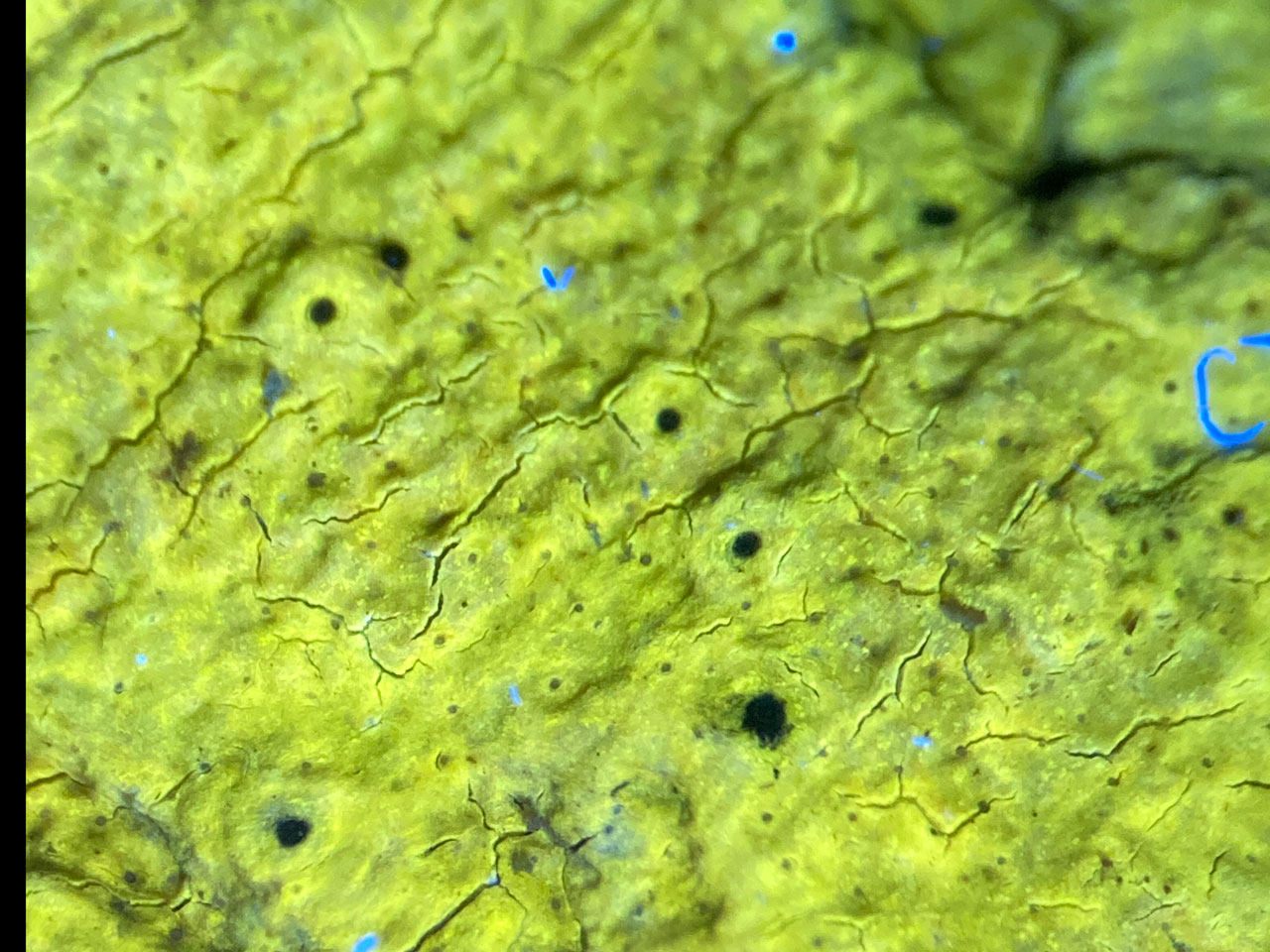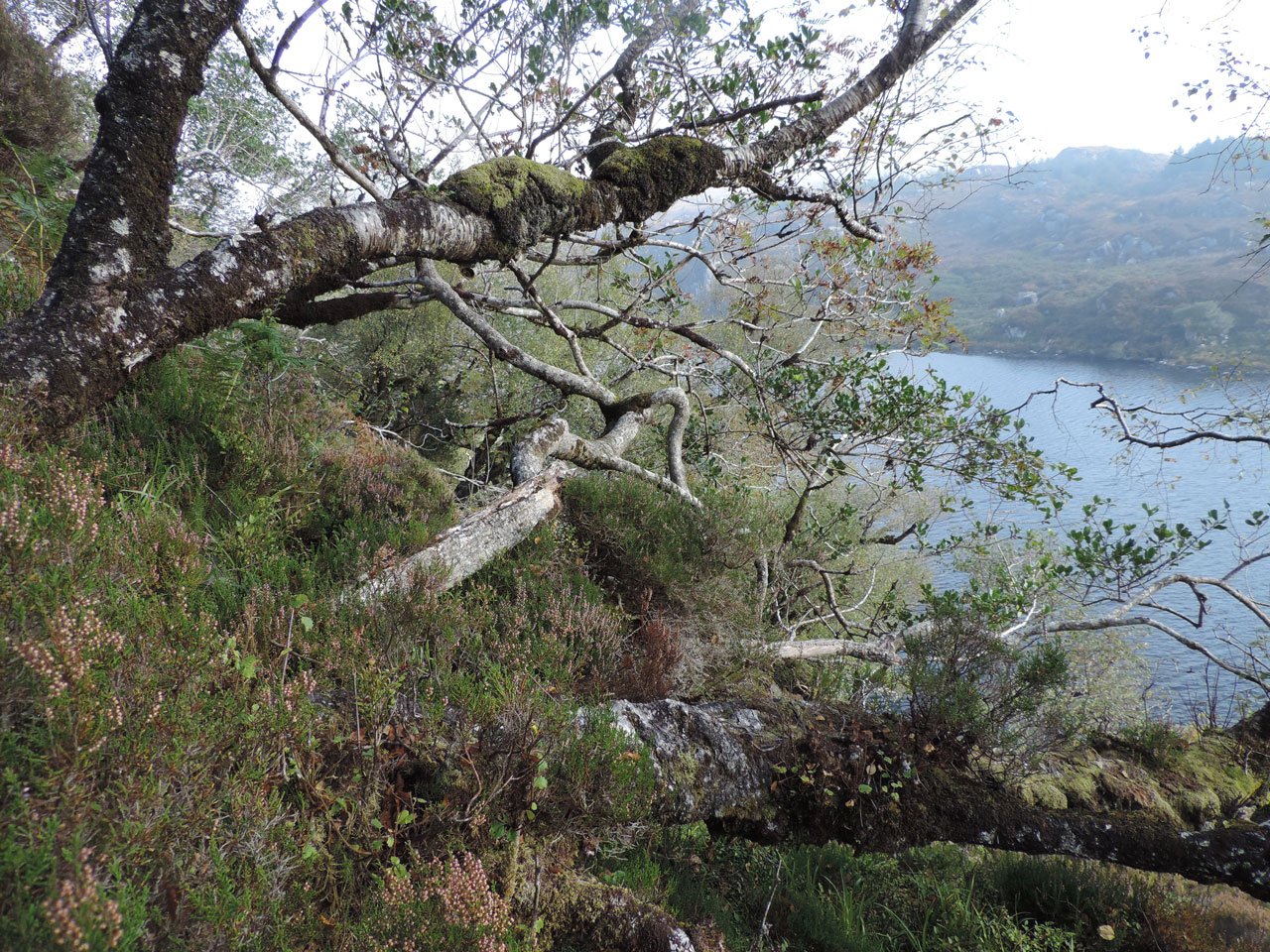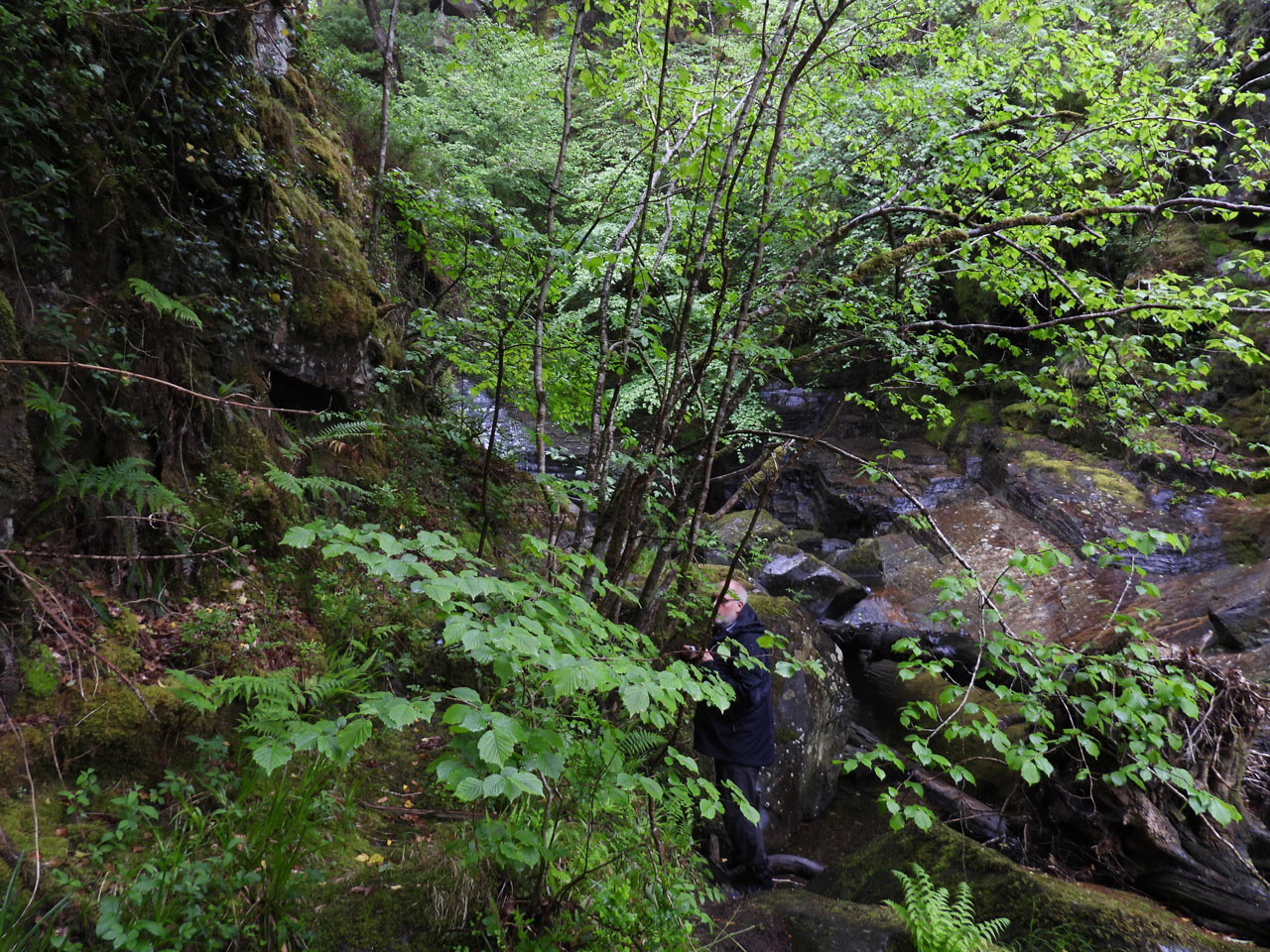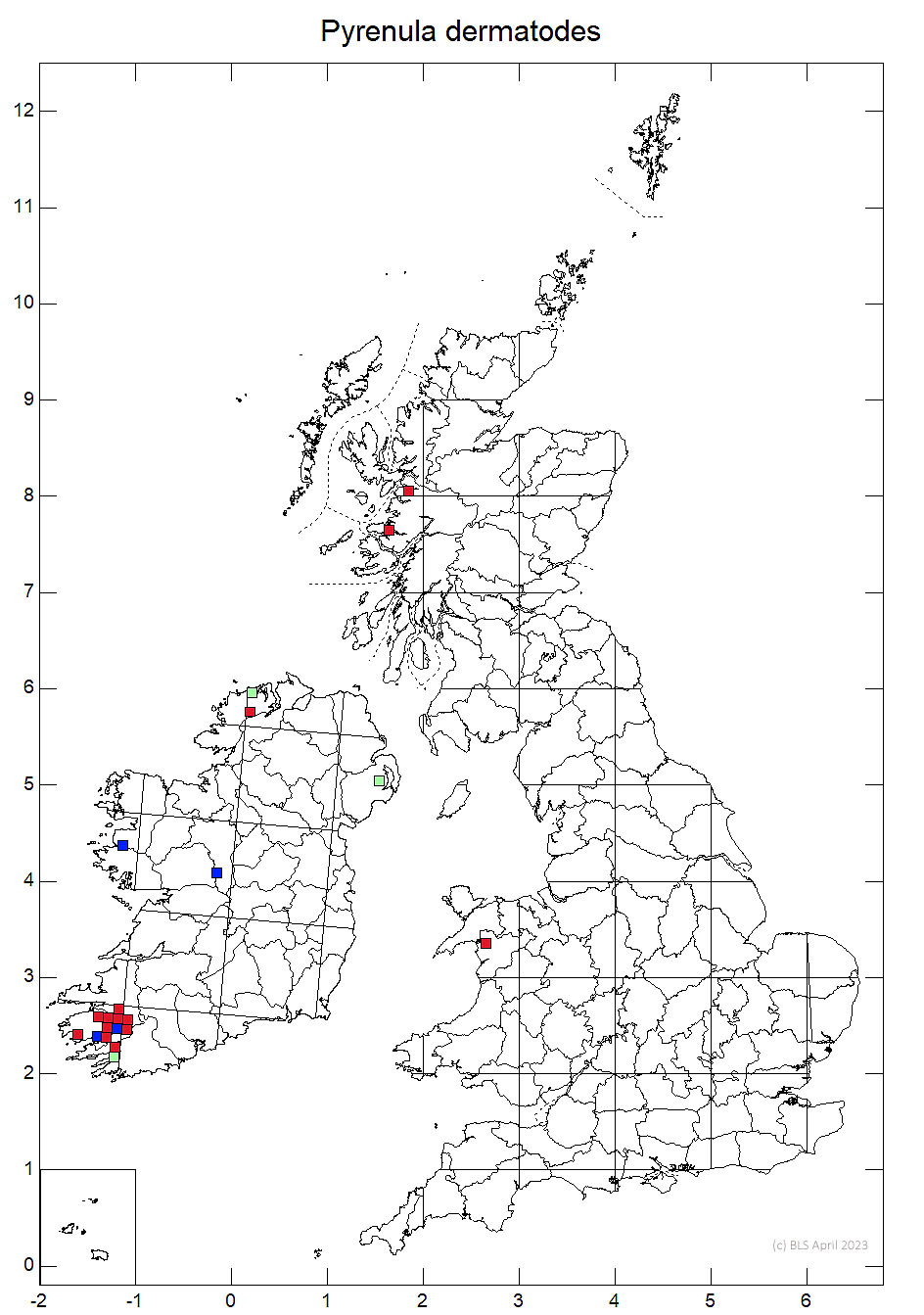Pyrenula dermatodes
A special Pyrenula, which is a mainly tropical species, only known from Ireland and Britain in Europe. Like Pyrenula hibernica it has fully immersed perithecia, but is distinguished by the perithecia not being grouped as in P. hibernica, by the very bright yellow-orange UV fluorescence and three septate ascospores. A species of temperate rainforests which is locally frequent on Holly in the mountains of south west Munster but very rare beyond in the rest of Ireland and in north Wales and the west Highlands.
Thallus superficial, yellowish green to ± orange-rust-coloured, fading to pale yellow- brown in dried preserved specimens, continuous to finely cracked or areolate; pseudocyphellae absent. Perithecia 0.2–0.44 mm diam. (measured in section), completely immersed in the thallus, forming very low projections, with only the 50– 60 μm diam. grey ostiole visible from above, or sometimes perithecia becoming exposed as a black disc to 0.38 mm diam.; hymenium not inspersed with oil droplets, without anthraquinones (K–). Ascospores 14–19 × 6.5–7.5 (–8.5) μm, 3-septate. Conidia curved, ca 15 μm long. Thallus C–, K+ orange-red in places, KC–, Pd–, UV+ very bright yellow-orange (lichexanthone).
Distinguished by the superficial, often cracked thallus, which is very brightly UV+ and by the (at least initially) very inconspicuous immersed perithecia. Pyrenula hibernica also has sunken perithecia, but the perithecia are arranged in groups and the UV fluorescence is much paler.
On smooth bark, mostly commonly Holly in Ireland but also on Sycamore, Hazel, Hawthorn, Ash, Beech and Rowan in oceanic woodlands, rarely on shaded siliceous rocks

Very rare. N. Scotland (Sunart & Knoydart, West Inverness), N.W. Wales, locally frequent in S.W. Ireland, extending north to Donegal; not known elsewhere in Europe.
A very rare species of highly oceanic woods in Britain and only known from a single grove of old Holly in Sunart, and on a Rowan at Barisdale, both West Inverness, Scotland and the Ceunant Llennyrch ravine in Meirionnydd, Wales. Very localised in Ireland, but locally frequent on Holly in the mountains of south west Munster. The British populations are extremely vulnerable, with the Welsh site damaged by past conifer planting and Rhododendron invasion and is proving difficult to restore to favourable condition.
Britain: Critically Endangered, International Responsibility species
Scotland: Priority Taxon for Biodiversity in Scotland
Wales: not assessed
Cannon, P., Coppins, B., Aptroot, A., Sanderson, A. & Simkin, J. (2023). Perithecial genera I, including Acrocordia, Alloarthopyrenia, Anisomeridium, Antennulariella, Arthopyrenia, Celothelium, Cyrtidula, Dichoporis, Eopyrenula, Julella, Leptorhaphis, Leptosillia, Lithothelium, Mycomicrothelia, Mycoporum, Naetrocymbe, Pyrenula, Rhaphidicyrtis, Sarcopyrenia, Swinscowia and Tomasellia. Revisions of British and Irish Lichens 37: 1-59.
Text by Neil A Sanderson
